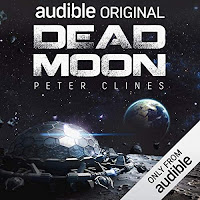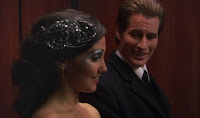 Thing is “profanity” isn’t really much of a selling point once we’re past… what, ten years old? Blood and gore usually just draws attention to it vanishing between scenes. Seeing a naked butt on screen lost a lot of its appeal once the internet became a thing. I guess you could make an argument for whose butt it is, but even that’s only going to get you so far…
Thing is “profanity” isn’t really much of a selling point once we’re past… what, ten years old? Blood and gore usually just draws attention to it vanishing between scenes. Seeing a naked butt on screen lost a lot of its appeal once the internet became a thing. I guess you could make an argument for whose butt it is, but even that’s only going to get you so far…
We’ve all known for a while now that this sort of stuff doesn’t make a good movie. It doesn’t automatically mean my movie is bad, but if these are the only elements I’m pushing to say my movie is good… well, I can’t be surprised if I don’t do well at the box office. As A. Lee Martinez noted a few weeks back, ”I never trust a story that wants to impress me with its gore and vulgarity. I have enjoyed many a story with gore and vulgarity, but never one that was sold to me that way.”
And yeah, sure, sometimes there’s a point to it. There’s a narrative reason I need two pages of gore or three pages of sex or a character who drops f-bombs in every sentence they speak or think. Nobody would say otherwise (nobody you should listen to, anyway). But this is a lot like adverbs, adjectives, or exclamation points. The more I use them, the weaker they get. They start to clutter up the page. So I want to be a little conservative with them.
 My friend Autumn Christian wrote a wonderful book called Girl Like A Bomb. The main character (and narrator), Bev, discovers she’s got an unusual superpower. When she has sex with people, they get… better. They clean up. They get focused. They become the best, self-actualized version of themselves.
My friend Autumn Christian wrote a wonderful book called Girl Like A Bomb. The main character (and narrator), Bev, discovers she’s got an unusual superpower. When she has sex with people, they get… better. They clean up. They get focused. They become the best, self-actualized version of themselves.But after those first few encounters—and one much more violent one (consider that your other warning)—Bev becomes all-too-aware of the effect her gift is having on her partners. It’s still fun, but it’s also a responsibility, and this shows in her narration. Less than halfway through the book, her various encounters becomes a quick sentence or less, sometimes coming across as more of an annoying obligation or burden. Because while the story involves sex, it’s not really about sex—it’s about what Bev can do with her superpower. So that’s what Christian focuses on.
And this holds for everything. If I push any story element up to ten for my whole book—sex, action, violence, gore, cool lines—it’s going to get boring fast. Sure, there’s a small percentage of readers that’ll be thrilled, but it’s reeeeeeeeeeeeeally tough to find any sort of wide appeal that way.
Plus… in a way, all this extensive description is me feeding everything to my reader. I’m telling them everything instead of showing them everything. And, yeah, I know that sounds weird but…
You’ve probably heard people talk about showing vs. telling all the time, but we rarely bring up the obvious. We haveto tell. That’s all we can do. I’m typing words for you to read, telling you what the characters see, hear, feel, smell, think, whatever. On the surface, telling is pretty much it for us as writers.
When we talk about showing, we’re talking about making images appear in the reader’s mind. And the longer it takes for those images to form, the less effective they are at creating some kind of emotional response. So, to speed things up, we want the reader to do some of the work for us. We want them to tell them just enough—just the right things—and have them fill in the blanks. They supply the horror or the excitement or the disgust so it’s instantly summoned to their mind, rather than waiting for me to spell it all out. It’s the difference between me telling you a joke that you immediately get and me having to explain the joke to you (“Because, y’see, the last guy was hiding in the refrigerator, so when they threw it over the railing he ended up…”).
That’s what showing is.
See, when I wrote out that little bit of dialogue, you got that. Even if you didn’t recognize the joke, you understood the situation of having to spell out the punchline for somebody. You filled in everything around that sentence fragment.
Truth is, the big majority of readers like doing this. They enjoy it when we trust them enough to understand things. When we don’t spell everything out for them. In graphic detail. Billy Wilder used to say you could let the audience add 2 + 2 now and then and they’d love you for it. Heck, I’ve got a whole loosely-scientific theory about how this kind of writing sets off the pleasure centers of our brain. No seriously.
So y’see Timmy, I don’t need to wipe every single one of these excessive, over-described bits from my manuscript. But, like adverbs, if I’ve got a bunch on every page… ehh, I might want to stop to reconsider some of my choices.
Next time, I’ve got a few more ideas to bounce off you.












